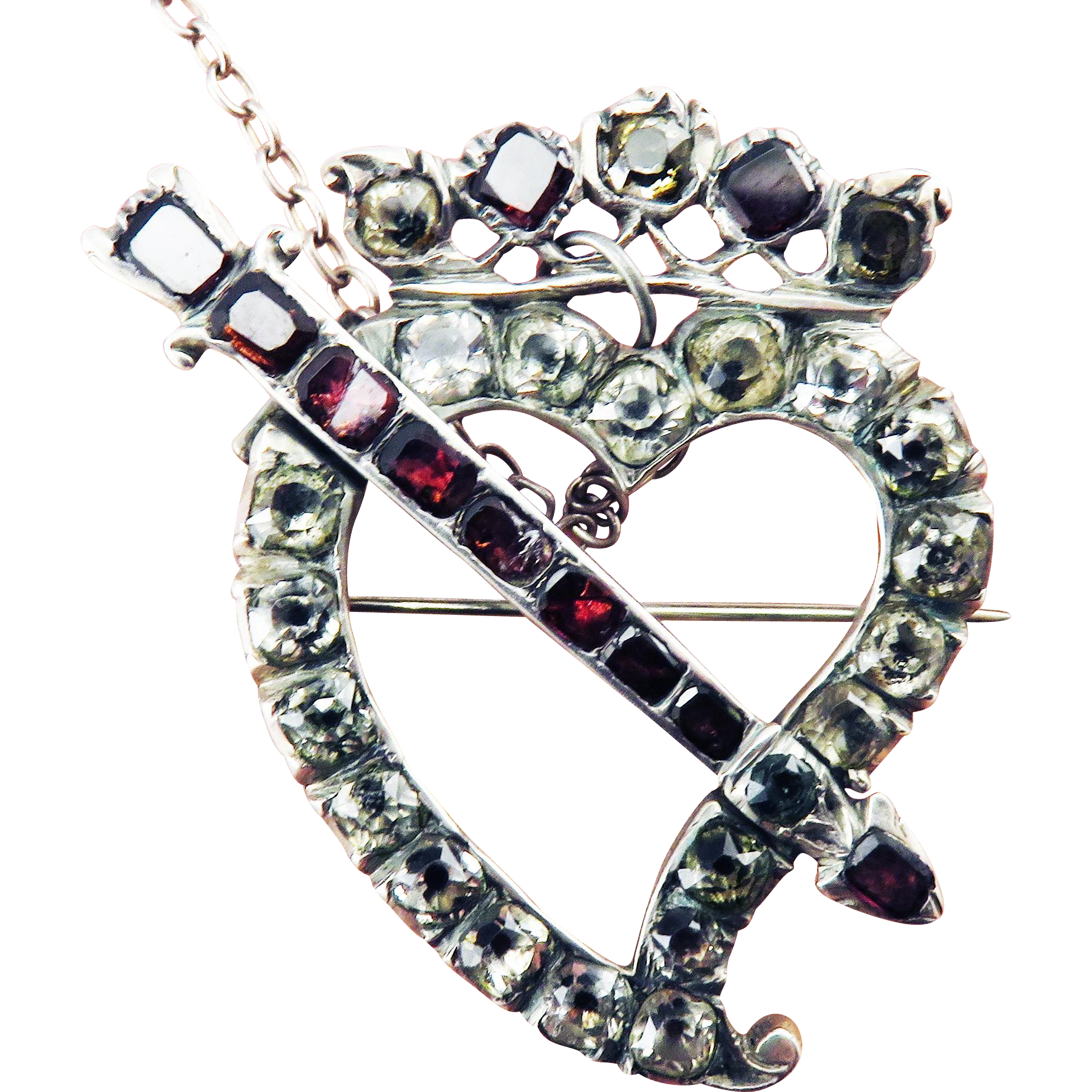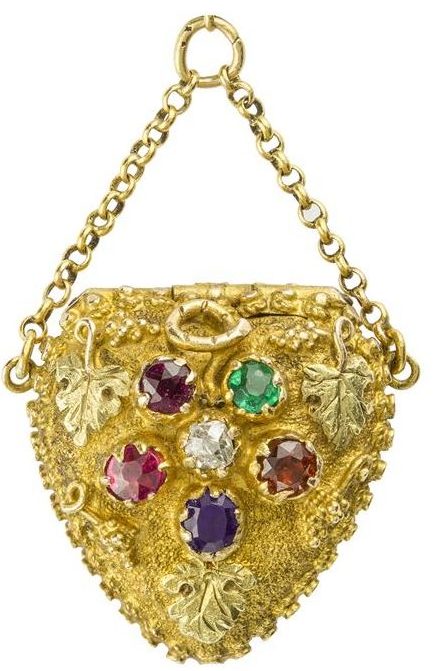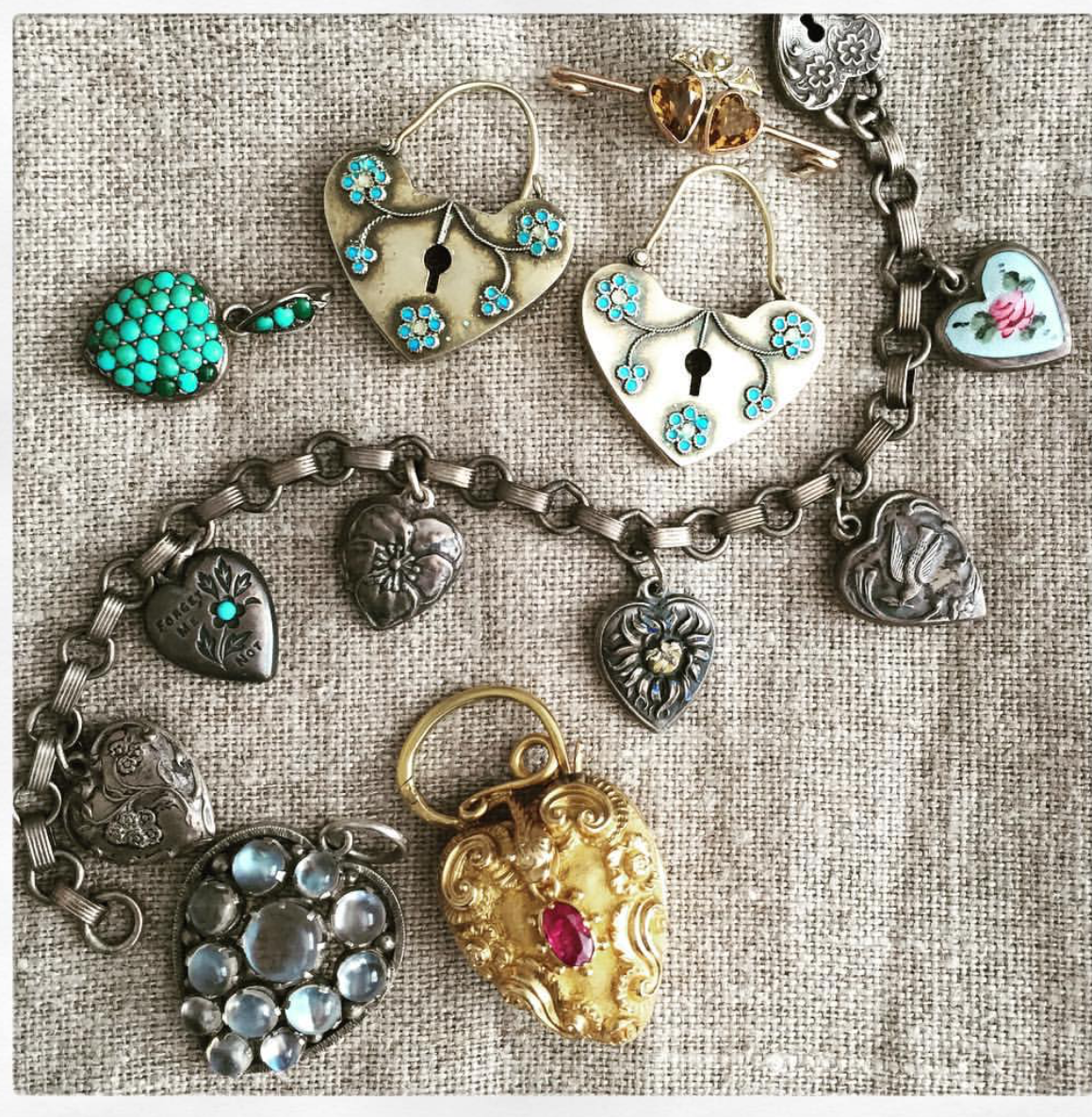The meaning and symbolism of heart jewelry throughout history


For those of you whose significant others are planning chocolate-shaped hearts for Valentine’s Day, the thought is (literally) sweet. But, as we all know, these gifts would be more meaningful, read: desirable if they came in precious metals and colored gemstones.
While some of us have always had a passion for hearts, others have found them too demure and girlish. But proponents of antique jewelry have come to embrace this iconic motif when we see them in period pieces and learn their various meanings. Yvonne @luckandlockets and Danielle @Jasmyntea, jewelry friends on Instagram, both with killer collections (read about them here) began appreciating the detail and deep significance of hearts in various forms of 18th and 19th century jewelry.
- @Luckandlockets collection of antique heart jewelry
- @jasmyntea collection of antique heart jewelry
They are the ideal gift to represent friendship, devotion, affection and romantic and enduring love. There is just no way to be cynical about antique hearts, from padlocks to acrostic pieces in which the letter of the first gemstone spells out a term of endearment.
A short history…The creation of the heart shape to signify love was first reported at the end of the Middle Ages. It gained popularity in the 15th and 16th centuries and became widely used in jewelry design throughout subsequent centuries.
In the early 20th century, the story of the relationship between King Edward VIII and Wallis Simpson was told though jewelry and one of the first pieces given to Wallis by Edward was a Cartier heart charm, which opened to reveal a Blaise Pascal line as an inscription: “The Heart Has Its Reasons”. Not only did the King abdicate his throne for his true love, but after they married and became the Duke and Duchess of Windsor, she wrote a memoir with the famous line as the title.
As much as the ‘heart has its reasons’, it also represents various sentiments when combined with other motifs. The gemstones featured in antique jewelry designs were also significant when it came to the diverse selection of hearts throughout the Georgian and Victorian times.
Some of the different styles included a Witches Heart, with its bottom curved to one side, which was originally worn as an amulet in ancient times to protect against evil eyes and from witches stealing milk or harming newborn babies. In Scottish culture it is called the Luckenbooth heart, and in the 18th century the token implied that the giver had become “bewitched to fall in love” with the recipient.
Here is an example of a Georgian silver and paste witches heart from Aesthetic Engineering Fine Jewels which captivates with it’s different colored paste stones and well preserved excellent condition. For those who are just trying out antique jewelry —this brooch is affordable and adds a loving touch to any jewelry wardrobe.

During Napoleon’s reign, acrostic jewelry in which the first letter of each gemstones spelled out a name, date or term of affection became popular and offered a language of love on it’s own. And, when words like “Regard”, “Love” and “Dearest” are depicted on a heart locket—it becomes even more romantic, as in this Bentley & Skinner piece.

Wartski features perhaps the most intricate acrostic piece I have personally seen—a bracelet with multiple heart sections of gemstones that spell out “Dearest”. Katherine Purcell, associate managing director of Wartski, explains, “we are always looking for pieces with sentimentality and this one offers a triple significance: an acrostic message, diamonds for endurance and the iconography of heart motifs.”

Another Wartski piece—this signed Boucheron brooch is equally masterful. Katherine explains, “It depicts two cupids shooting their arrow through a diamond heart to win their ‘true and everlasting love’. The flame for burning desire and the rubies for passion create the finish touches of a truly amazing historical piece.”

Other styles of bracelets, pendants and rings include entwined hearts —with connotations of “continuous, everlasting love”. Some are tied with a bow or knot, similar to the infinity sign, which cannot be broken. And double hearts, set side by side in rings were traditionally set with gemstones and were give for betrothals in the 1800s. Gems that appear in combination in these antique pieces include diamonds for endurance, rubies for passion or love, sapphires for fidelity, and emeralds for hope and prosperity.
A perfect example of this is A. Brandt & Son’s Victorian ruby and diamond double heart bracelet with a tied bow on top. What’s even more special about this piece is that the center hearts were designed to swivel out to be worn as a pendant.

Double hearts with a crown symbolized “the reigning of fidelity over a marriage”, while single crowned hearts were equally popular for engagement rings and carried the meaning “ruler of my heart”. The poet Elizabeth Barrett Browning’s engagement ring from 1964 was a crowned diamond heart.
This doubled diamonds heart ring from Bell & Bird suggests “two hearts together as one”.

While this Bentley & Skinner brooch of a double ruby and emerald gemstone heart refers to two hearts that are bound together by love, passion and hope for the future,” explains Omar Vaja director and spokesperson for the company,

A flaming heart is representative of “burning with passion”, although the sacred heart depicted with a flame is connected to devotional or religious love.
This ruby, emerald and diamond set sacred heart brooch is “associated with the Portuguese Order of Christ, “ explains Catherine Cutler of Sandra Cronan. “This particular piece represents the Order with the heart aflame with love, the tiny ruby tears demonstrate Christ’s compassion for man, the cross on which he died and the emerald crown of thorns. It is mounted in silver and gold, Portuguese, circa 1780.”

When it comes to key and heart motifs, this is one of the most awe-inspiring I have seen. Rhianna Shennum co-owner of Bell & Bird explains, “This ring engraved with the date 1820 features a a natural sapphire heart-shaped stone in a pinched collet setting which conceals a locket compartment, also in the shape of a subtle heart. On either side of the sapphire, connected by a chain, sits a key and a lock of gold, which is symbolic of ‘key to my heart.’” Rhianna continues, “what makes this ring so intriguing is the additional original engraving. On the outside: ‘Caroline Queen of England 1820’. On the inside: ‘Franchise et Discretion’. Famous for her alleged indiscretions, this ring surely has a great story.”

Heart-shaped padlocks or lockets were a way to lock away a loved one’s memory, and many Victorian styles were designed with flowers suggesting remembrance, love and fidelity, to name just a few romantic notions. And sometimes you just come across a piece that resonates on a very personal level as in the padlock Laurel Stearns of Pass It Along found. She explains, “This giant garnet padlock is truly one of my favorite hearts. The back locket had a hidden train ticket inside. When I first saw it, I imagined this ticket was for the two lovers to meet up in distant lands. It was hidden inside and not showing when I bought the piece. I moved it to be displayed.”
Antique hearts speaks of endurance, everlasting devotion, and the warmth of true affection and are rife with symbolism that recalls the poetry of love— just the type of jewel, perfect for Valentine’s Day and beyond.
Parts of this story originally appeared in an article I wrote for thejewelleryeditor.com in November 2015






